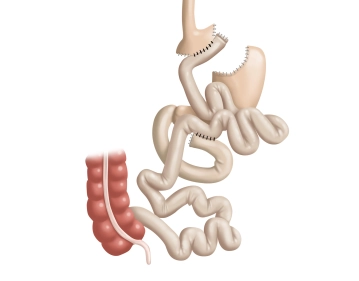The incidence and prevalence of morbid obesity with its associated comorbidities is increasing worldwide, particularly in Western countries. According to the WHO, 600 million people are obese (BMI > 30 kg/m2).
As evidenced by high-quality data, bariatric and metabolic surgical procedures are the most effective and long-lasting treatment modalities in morbid obesity and outperform nonsurgical multimodal regimens.
In addition to achieving sustained weight loss, surgery can also successfully treat obesity-related comorbidities, such as type 2 diabetes, arterial hypertension, lipid metabolic disorders, and sleep apnea syndrome.
The proliferation and acceptance of bariatric surgery has increased significantly worldwide over the past 20 years (approx. 150,000 procedures in 2003; 470,000 in 2013).
Successful bariatric surgery outcome is evaluated based on effective weight loss and a positive effect on associated morbidities.
Roux-en-Y gastric bypass (RYGB) is the gold standard of bariatric surgery, accounting for about 45%.
The large number of complex changes with metabolic effects unfolding in the enterohumoral axis because of surgery go well beyond weight loss.
The new term “metabolic surgery” reflects the expanded indication. It is expected that bariatric surgery will play a greater role in the management of metabolic syndrome.
Many patients with type 2 diabetes show complete remission within days of surgery and long before significant weight loss. The current discussion has evolved to the issue of treating normal weight and slightly overweight diabetics by metabolic surgery as well.
With the advent of laparoscopic surgical techniques, these procedures, initially regarded as high-risk surgery, can now be effected with an acceptable risk profile.
Bariatric and metabolic operations are not included in the Standard Benefits Catalog of the German Health Insurance providers. Therefore, each patient must apply individually to his/her provider for this type of surgery.

